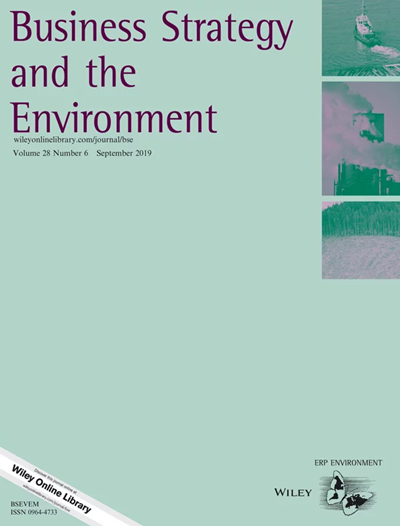Unlocking Circular Potential and Empowering Circularity: Paving the Path for Circular Supply Chain Enablement in Indian Textile Industries
IF 13.3
1区 管理学
Q1 BUSINESS
引用次数: 0
Abstract
The implementation of circular supply chain (CSC) practices in textile industry has gained prominence to address environmental challenges and meet increasing consumer demand for sustainability. This study explores the role of CSC in enhancing circularity within the textile supply chain by focusing on its value‐creating capabilities, particularly in data collection, monitoring, processing, and analysis. The objective of the studies is to unlock circular potential and empower circularity by developing a framework and identifying paving the path for CSC adoption in the Indian textile organizations. The literature search and the opinion of experts to identified 15 CSC enablers, and the applicability of the proposed framework is demonstrated through a case study in the Indian textile industry. The prioritization and unlocking of circular potential CSC enablers have been done by grouping them into cause‐and‐effect categories using the Fuzzy DEMATEL methodology. The findings reveal that “demand for eco‐friendly products, consumer awareness and behavior, internal stakeholder involvement and collaboration, regulatory pressures and compliance, and government incentives and subsidies” plays a pivotal role in influencing other factors within the CSC implementation. The cause group, with its systemic impact, emerges as the most critical for effective and efficient CSC implementation, while the effect group comprises practices more susceptible to influence from cause factors. The proposed framework offers a systematic, comprehensive, and structured methodology for enhancing business organizations performance through the step‐by‐step implementation of CSC. The findings of the study will support managers, practitioners, and policy makers in formulating business strategies to facilitate the effective implementation of CSC practices.释放循环潜力,增强循环能力:为印度纺织行业的循环供应链实现铺平道路
在纺织行业中,循环供应链(CSC)实践的实施在应对环境挑战和满足消费者对可持续性日益增长的需求方面取得了突出的成就。本研究通过关注CSC的价值创造能力,特别是在数据收集、监测、处理和分析方面,探讨了CSC在增强纺织品供应链循环中的作用。研究的目的是通过开发框架和确定为印度纺织组织采用CSC铺平道路,来释放循环潜力并增强循环性。通过文献检索和专家意见,确定了15个CSC促成因素,并通过印度纺织行业的案例研究证明了所提出框架的适用性。通过使用Fuzzy DEMATEL方法将潜在的循环CSC推动者分组为因果类别,完成了它们的优先级排序和解锁。研究结果表明,“对生态友好产品的需求、消费者意识和行为、内部利益相关者的参与和协作、监管压力和合规、政府激励和补贴”在影响生态友好型企业实施的其他因素中起着关键作用。原因组具有系统的影响,对于有效和高效地实施CSC是最关键的,而结果组包含更容易受到原因因素影响的实践。提出的框架提供了一个系统的、全面的、结构化的方法,通过逐步实施CSC来提高商业组织的绩效。研究结果将有助管理人员、从业员及政策制定者制订业务策略,以促进有效推行公务员服务制度。
本文章由计算机程序翻译,如有差异,请以英文原文为准。
求助全文
约1分钟内获得全文
求助全文
来源期刊

Business Strategy and The Environment
Multiple-
CiteScore
22.50
自引率
19.40%
发文量
336
期刊介绍:
Business Strategy and the Environment (BSE) is a leading academic journal focused on business strategies for improving the natural environment. It publishes peer-reviewed research on various topics such as systems and standards, environmental performance, disclosure, eco-innovation, corporate environmental management tools, organizations and management, supply chains, circular economy, governance, green finance, industry sectors, and responses to climate change and other contemporary environmental issues. The journal aims to provide original contributions that enhance the understanding of sustainability in business. Its target audience includes academics, practitioners, business managers, and consultants. However, BSE does not accept papers on corporate social responsibility (CSR), as this topic is covered by its sibling journal Corporate Social Responsibility and Environmental Management. The journal is indexed in several databases and collections such as ABI/INFORM Collection, Agricultural & Environmental Science Database, BIOBASE, Emerald Management Reviews, GeoArchive, Environment Index, GEOBASE, INSPEC, Technology Collection, and Web of Science.
 求助内容:
求助内容: 应助结果提醒方式:
应助结果提醒方式:


